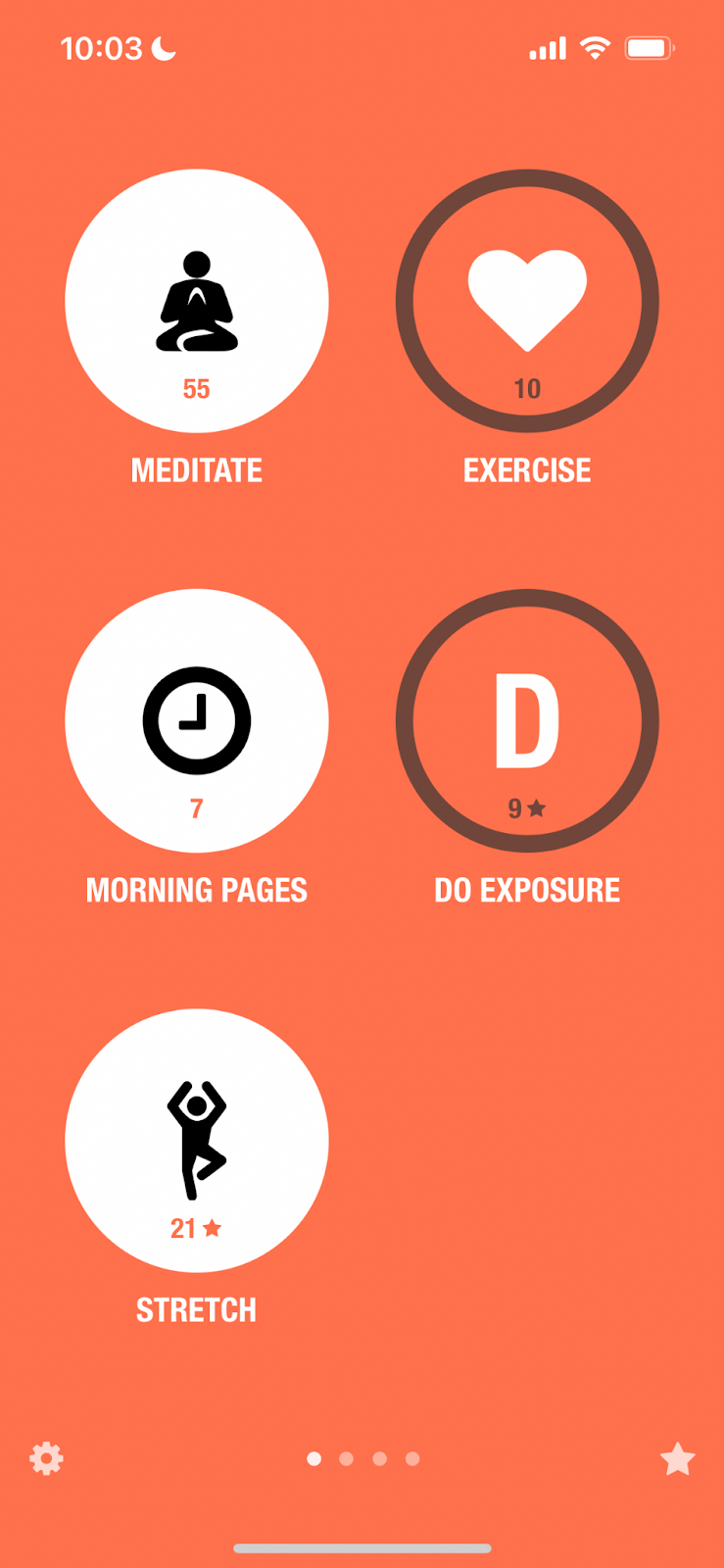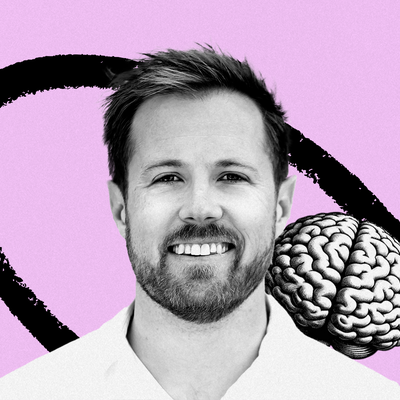
Sponsored By: Axios HQ
Today’s newsletter is brought to you by Axios HQ, intuitive software from Axios that helps your team think more clearly, communicate more crisply, and send focused, effective updates.
Fortune 100s and startups alike use Axios HQ to craft smart updates that distill essential information in half the time — increasing transparency, boosting engagement, and building trust across the organization.
Innovative teams know communication is the key to culture, connectedness, and growth, and use HQ's intuitive platform to elevate company updates and get their teams smarter, faster.
I’m constantly experimenting with tools, systems, routines, books, and supplements to try to live a better life. Experimentation is the essence of Superorganizers: we look at the systems and processes that work for high-performers and we apply them to our own lives. We keep what works and we throw away what doesn’t.
As 2021 is coming to a close, I thought I’d write a little update on what’s worked for me this year. I’ve tried a lot, and learned a lot—in fact I think this is the year I might have learned the most in my entire life.
The following is a non-exhaustive list of the things that have worked best for me in 2021. I hope it helps.
No Meetings Before Noon
I’ve been trying to avoid meetings before noon so I can get work done, and so far I’ve been pretty good at it this year. Instead, I try to spend my mornings on deep work: writing, editing, thinking about what’s going on at Every. It really helps my output and my quality of life. Recommend if possible.
Streaks
Right now, I’m on a Streaks streak. And it’s great. It’s a little app that’s been around for forever that helps keep track of how many days in a row you do something. I’ve gone back and forth on using it over the years, and right now I’m really enjoying it.
The main things I track are meditation (every day), stretching (4x a week), exercise (3x a week), morning pages (5x a week), and exposure (3x a week). (Exposure is treatment for my OCD symptoms, I’ll address more below.)
I find that if I’m doing all or most of these things on a daily basis, I’ve set myself up really well to have a good day. If I had to pick 2 with the biggest impact I’d probably pick meditation and exercise.
Low-ish Carbs During the Day
I tried out Levels, a continuous glucose monitor company, and learned a lot (review coming soon.) It sparked an interest in trying to eat lower carb during the day to see how it affected my energy levels. Anecdotally, it’s really effective for me.
I used to have a lot of days where I’d feel lethargic and low-energy, especially in the afternoons. By the time I’d finished with work I’d feel like I could barely make it off the couch. But if I’m eating lower carb I’m much more energetic, and that energy is more even throughout the day. It’s something I plan to stick with.
Sun Lamp
I got one of those bright lamps that mimic the sun for $30 on Amazon. I try to get outside in the morning too, but the lamp seems like it really helps me with that yuck feeling I get on cloudy winter days where it’s just a little harder to get out of bed. Definitely worth a shot.
Email and Workout Babysitters
Social accountability really helps me do things that I don’t want to do. There are many ways to achieve social accountability, but one way that has worked for me is to use what I lovingly call “babysitters” to make sure I get done the things I need to—even if I don’t want to do them. The two categories they have been most helpful so far are: working out and email.
In the beginning of 2021 I started working with a trainer on Zoom. He’s incredible—when we began I was out of shape and had muscle imbalances all over the place. Now I’m stronger, fitter, and more flexible than I’ve probably ever been. Most importantly, though, when I work with my trainer I show up really consistently. The consistency is generated just from the knowledge that someone will be disappointed if I don’t show up.
I started to reason about where else this idea might be valuable—where else showing up consistently to something I don’t really want to do might pay dividends. And I realized that I really needed a personal trainer just for my inbox.
I’m perpetually in a productivity cycle with my inbox. I’m on top of it for a few weeks, then I get busy and fall off, then I avoid my inbox and it gets worse, and then I buckle down and power through everything in a coffee-induced Sunday fugue state and the cycle starts all over again.
I figured a personal trainer for my inbox wouldn’t have to do much really. I don’t need someone to tell me how to use my keyboard, or how to respond to particular kinds of emails. I just needed a set time on my calendar to do emails, have the trainer show up at the beginning and ask me how many emails I had to respond to, and then show up at the end to ask me if I’d finished them all.
I started to think about where I could find such a person, but searching for “email personal trainer” doesn’t yield much. I considered posting on Craigslist and seeing what might come in. Then I realized I might be able to use my virtual assistant. I already shared a part-time VA with Nathan, and so I asked if she might help me get my inbox done by providing me with some social accountability. I wasn’t sure if she’d say yes, but she did!
She blocked out an hour three times a week for us for “admin time”. At the beginning of the hour she calls me and asks how many emails are in my inbox. We set a goal for how many I’ll have at the next check in and then she hops off. It takes a minute or two, and I’m off to the races. In the middle of the hour she checks in again, I report how much I got done, and then get back to work. At the end of the hour she checks in a final time, and then we’re done.
It really works for me, and it doesn’t take that much time for her. It works for a few reasons: 1) I just end up dealing with my inbox more consistently rather than sporadically. But 2) It means I have a set time to tackle the emails that I most want to avoid—which means I’m more likely to feel the energy to respond quickly to other emails that come in during the rest of the day.
This is the thing that works that I’m most reluctant to share. I have a sense of shame about not having the willpower to do it on my own, and also because it is a gigantic privilege to be able to pay people to do these things for me—a privilege that most people reading this won’t have.
But I thought it might be important to share because there are many ways to introduce social accountability that don’t require money (pair up with a friend who also wants to do email more consistently!), and I think knowing that I need social accountability to get things like this done might reduce other people’s shame at needing the same thing.
Compassion-Focused Meditation
It’s weird but doing a daily compassion meditation has seriously changed my life. It just makes me feel way more grounded and happy in my day-to-day life.
You can listen to the ones I listen to here. I most frequently use #16, Compassionate Self-Visualization.
ACT
Last January I discovered Acceptance and Commitment therapy and it really struck me. The ACT model goes something like this:
The idea of most other therapy modalities is to try to reduce negative thoughts and feelings so that you can get on with your life. The ACT view is that sometimes seeing negative thoughts and feelings as a problem to solve, is the problem.
Instead, ACT emphasizes trying to understand what you most value in your life and taking steps to move towards those values. In doing so, negative thoughts and feelings will of course arise, and ACT provides tools to learn how to move through those experiences effectively.
This is of course just one way to look at things and it won't be helpful for everyone. But it’s been very helpful for me. The process of understanding what I value, and finding reasons to go through stressful experiences has helped me turn a lot of anxiety into growth.
If you want to read more here are a few recommendations:
Dip your toe in: A Liberated Mind
Jump into the pool: Experiencing ACT From the Inside Out (This is for clinicians which I generally prefer because they’re more realistic.)
The deep end: Mastering the Clinical Conversation
Exposures
The “gold standard” treatment for OCD is exposure therapy, but I’ve found in years of going to therapy that therapists are really reluctant to do it. It works, but it’s difficult for the client, and there’s a high dropout rate.
I finally found someone to do it with me and the results have been incredibly good. Beyond OCD, I think it’s also helpful for regular old anxiety and I’ve been using it to help with that as well.
If you’re interested in how and why it might work, I recommend this episode from the Huberman Lab podcast.
NOTE: if you’re experiencing mental health issues, don’t do anything like this without the advice of a therapist and/or doctor. It’s powerful stuff, and should only be done under the right conditions. This worked for me, but it may not work for you. Proceed with caution.
Stretching
Rolling out of bed every morning and stretching just feels good. I do the following stretches every day:
I also mix in other stretches depending on the day.
Inositol
I randomly came across inositol on Examine.com and it’s really helped me with anxiety and OCD symptoms. There’s a reasonable evidence base for it, but please do not take this (or any other supplement) without talking to a doctor beforehand. I talked to a doctor and it turned out it was the right thing for me. I’m not a doctor and I’m not making any recommendations, I’m just telling you what seems to have helped.
Fish Oil
I started taking at least 1000mg of EPA via fish oil on the advice of the Huberman Lab podcast. It’s a little hard to tell if it’s working but the evidence says it’s probably helpful for mood support. I’ll keep taking it!
Couples Therapy
My friends make fun of me for how much couples therapy I do. Nathan and I have done it every week since we started working together, I’ve also done it in my romantic relationships—and I even did it for a little while with my sister.
Couples therapy has taught me way more about myself and how I relate to other people than I’ve learned in years of individual therapy. The reason? You can’t hide in couples therapy—all of the shit you do in your daily life is going to come out in the session, and there’s no glossing over it.
I’ve always been sort of jealous of people who get to work for Bridgewater for a limited time, because I really wanted to get the direct and transparent feedback that gets provided in an environment like that. It turns out, couples therapy is kind of like that…just much more supportive.
It’s made a gigantic difference in my life this year, and I expect it to continue paying dividends in the future.
Remorse of Conscience
Here’s something I learned about myself in couple’s therapy.
When someone expresses a negative emotion about me that I feel is unfair my first reaction is often to close off or tamp down. One way I do this is to try to measure how “reasonable” or “fair” the emotion is. I’ll usually admit to whatever I think is “reasonable” and then say, “but”, and try to push away whatever part of the emotion is unreasonable.
This doesn’t work. It leaves people feeling unheard and often resentful. Part of the thing I’ve learned in couple’s therapy about the work I need to do is to remain open, engaged, and calm even around negative emotions that I don’t feel are justified.
One way that’s helped me is the idea of “remorse of conscience.” It’s basically feeling sad that someone is hurt and that I may have contributed to it without also directing self-condemnation and blame at myself for doing so. It’s empathic guilt.
It can actually be a nice feeling. By removing the self-condemnation from the sadness, it helps me to understand where someone’s coming from, and allows me to know what part I might have played in it in a more flexible and open way.
To practice, I put an index card in my pocket with “remorse of conscience” on it and touched it whenever someone was expressing a negative feeling to me in my day-to-day.
It works much better for everyone.
The best control is no control
Here’s another thing I learned in couple’s therapy. Business partnerships are hard. If both people are motivated and opinionated, you each end up trying to control each other in contexts that are inappropriate.
Nathan and I have found that this habit of tightening the screws of control doesn’t work so well—it often causes your partner not to listen to you, and instead to rebel against the control you’re attempting to exert.
What we’ve found paradoxically is that releasing the control you’re trying to exert is the best way to be listened to. In Zen Mind, Beginner’s Mind Shunryu Suzuki puts it this way:
“Even though you try to put people under some control, it is impossible. You cannot do it. The best way to control people is to encourage them to be mischievous. Then they will be in control in its wider sense…Let [people] do what they want, and watch them. This is the best policy. To ignore them is not good; that is the worst policy. The second worst is trying to control them. The best one is to watch them, just to watch them without trying to control them.”
The way this works out in practice with Nathan and I is that we both try to preface our feedback with, “it’s your decision and I’m behind whatever you decide.” Which gives each of us enough freedom to feel able to listen to the other one’s perspective.
The trick is you have to actually mean it. Which can be the hardest part.
That's it! I hope some of this is helpful for you. I'd love to know, what worked for you this year? Leave a comment or reply to this email to let me know!
Find Out What
Comes Next in Tech.
Start your free trial.
New ideas to help you build the future—in your inbox, every day. Trusted by over 75,000 readers.
SubscribeAlready have an account? Sign in
What's included?
-
Unlimited access to our daily essays by Dan Shipper, Evan Armstrong, and a roster of the best tech writers on the internet
-
Full access to an archive of hundreds of in-depth articles
-
-
Priority access and subscriber-only discounts to courses, events, and more
-
Ad-free experience
-
Access to our Discord community
Thanks to our Sponsor: Axios HQ
Thanks again to our sponsor Axios HQ for today’s newsletter. Click here to see a sample newsletter written using Axios HQ and learn how your team can start communicating more effectively.





Comments
Don't have an account? Sign up!
Hey! Look into Body Doubling. Your email trainer is doing something similar.
It's something that esp works for ppl with ADHD. You can find free sessions on Focusmate.com
Your getting burnt out on Sundays sounds could be hyperfocusing. You work so hard to force yourself to do the tasks, that when u finally get there, u stay until u use all your strength.
@k7lb Oh wow, I'd never heard the term body doubling! That's exactly what's going on. Really appreciate it :)
Hi,
Out of curiosity, what dose of Inositol do you take? And when in the day do you take it.
(Not soliciting medical advice, genuinely curious)
@nicholasrokosz again not medical advice, talk to a doctor before doing anything like this, etc. but 1-4 grams as needed throughout the day. I just put it in a water bottle and drink it. the studies on inositol for panic / ocd are at much higher doses (like 18g) but different people have different levels of tolerance / see effects at different levels